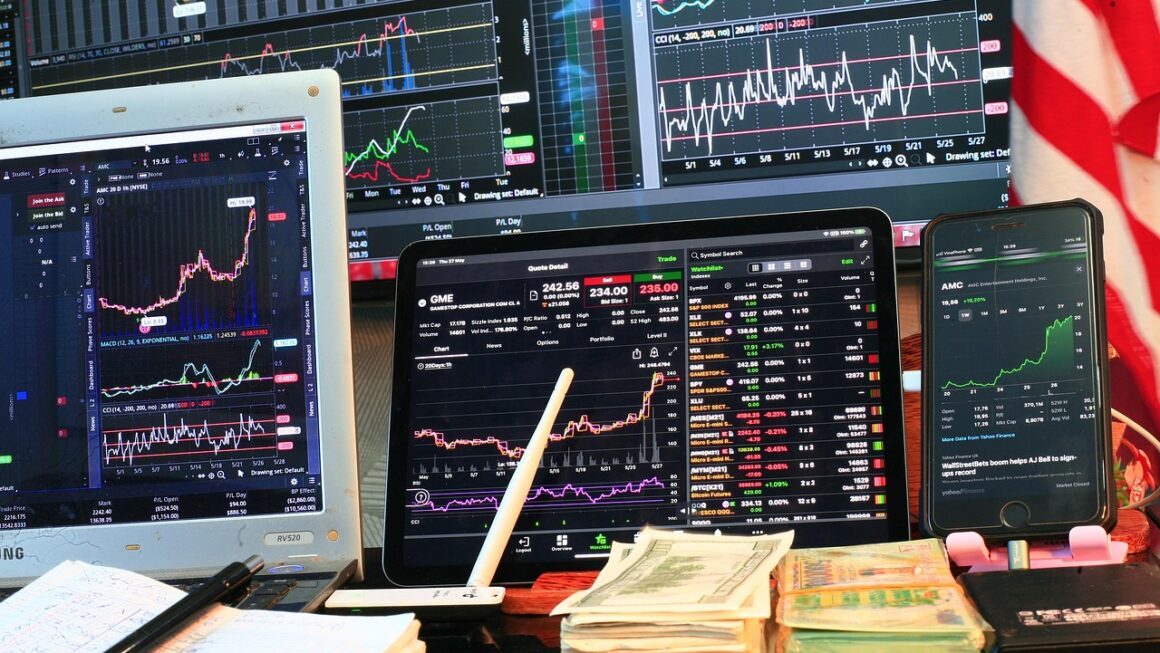Margin trading, often touted as a powerful tool for amplifying returns, can be both a blessing and a curse in the world of finance. It allows traders to leverage borrowed funds to increase their trading positions, potentially leading to higher profits. However, it also magnifies losses, demanding a thorough understanding of its mechanics and inherent risks. This comprehensive guide will delve into the intricacies of margin trading, exploring its benefits, risks, and practical applications.
What is Margin Trading?
Defining Margin Trading
Margin trading is a type of trading where investors borrow funds from a broker to trade assets. This borrowed capital allows them to control a larger position than they could with their own funds alone. Think of it as a loan specifically for trading purposes, secured by the assets in your account. The “margin” is the initial amount you need to deposit to open a margin account and maintain the position.
How Margin Trading Works: A Practical Example
Let’s say you have $5,000 and want to buy shares of a company trading at $100 per share. Without margin, you can purchase 50 shares. However, with a margin of 50% (meaning you only need to put up 50% of the trade value), you can control twice the amount of shares.
- Investment: $5,000
- Margin requirement: 50%
- Total purchasing power: $10,000
- Shares you can buy: 100 shares
If the stock price increases to $110, your profit on 100 shares would be $1,000 ($10 profit per share 100 shares), compared to $500 with only 50 shares. However, if the stock price drops to $90, your loss would also be doubled.
Key Terms in Margin Trading
Understanding the jargon is crucial for successful margin trading. Here are some key terms:
- Initial Margin: The percentage of the total purchase price required to open a margin account.
- Maintenance Margin: The minimum equity you must maintain in your margin account. If your account value falls below this level, you’ll receive a margin call.
- Margin Call: A notification from your broker requiring you to deposit additional funds to bring your account back up to the maintenance margin level. Failure to meet a margin call can result in the broker selling your assets to cover the shortfall.
- Leverage: The ratio of the total position value to your own capital. In the example above, the leverage is 2:1.
- Interest Rate: Brokers charge interest on the borrowed funds. This is a cost that needs to be factored into your trading strategy.
Benefits of Margin Trading
Amplified Profits
This is the most attractive benefit. By leveraging your capital, you can potentially generate higher profits from relatively small price movements. As demonstrated earlier, a small increase in the share price results in disproportionately larger gains compared to trading with your own capital.
Increased Trading Opportunities
Margin trading provides access to more trading opportunities that might be inaccessible due to capital constraints. You can diversify your portfolio and take advantage of market movements in a wider range of assets.
Short Selling Capabilities
Margin accounts are often required for short selling, a strategy where you profit from a decline in an asset’s price. You borrow shares and sell them, hoping to buy them back at a lower price later. The margin account acts as security for the borrowed shares.
Increased Liquidity
Margin accounts offer increased liquidity as you can access borrowed funds to quickly capitalize on fleeting opportunities, without having to liquidate your existing holdings.
Risks of Margin Trading
Magnified Losses
Just as profits are amplified, so are losses. If the market moves against your position, your losses can quickly exceed your initial investment. This is the most significant risk associated with margin trading.
Margin Calls
Failing to meet a margin call can lead to forced liquidation of your assets at unfavorable prices, potentially crystallizing significant losses. It’s crucial to monitor your account balance closely and be prepared to deposit additional funds if necessary.
Interest Charges
You’ll be charged interest on the borrowed funds, which can eat into your profits. The interest rate will vary depending on the broker and market conditions. These interest payments must be considered when calculating the profitability of your trades.
Potential for Debt
In extreme cases, losses can exceed your initial investment and leave you owing money to your broker. This is a serious risk and underscores the importance of managing your risk effectively.
Psychological Impact
The high-pressure environment of margin trading can be stressful and lead to poor decision-making. The fear of losses can trigger impulsive actions and deviate from your trading plan.
Strategies for Managing Risk in Margin Trading
Start Small
Begin with small positions and gradually increase your exposure as you gain experience and confidence. Avoid overleveraging your account, especially when starting out.
Use Stop-Loss Orders
Stop-loss orders automatically close your position when the price reaches a predetermined level, limiting your potential losses. This is a crucial risk management tool for margin trading.
Monitor Your Account Regularly
Keep a close eye on your account balance and margin levels. Be prepared to take action quickly if your account falls below the maintenance margin requirement.
Understand Your Risk Tolerance
Assess your risk tolerance and only trade with capital you can afford to lose. Margin trading is not suitable for everyone, especially those with a low risk appetite.
Diversify Your Portfolio
Don’t put all your eggs in one basket. Diversifying your portfolio can help mitigate the risk of significant losses from a single trade.
Have a Trading Plan
Develop a well-defined trading plan with clear entry and exit points, risk management rules, and profit targets. Stick to your plan and avoid making impulsive decisions based on emotions.
Who Should Consider Margin Trading?
Margin trading is best suited for experienced traders who:
- Have a strong understanding of market dynamics.
- Possess a high-risk tolerance.
- Have a well-defined trading strategy.
- Can manage their emotions effectively.
- Are prepared to monitor their accounts closely and act quickly when necessary.
It is not* suitable for beginners or those with limited financial resources. Before engaging in margin trading, consider consulting with a financial advisor to determine if it’s right for you.
Conclusion
Margin trading offers the potential for amplified profits, but it comes with significant risks. A thorough understanding of its mechanics, diligent risk management, and a disciplined trading approach are essential for success. It’s crucial to weigh the potential benefits against the inherent risks and only engage in margin trading if you have the knowledge, experience, and resources to manage it effectively. Ignoring the risks can lead to substantial losses, emphasizing the need for caution and responsible trading practices. Always remember: leverage is a double-edged sword.




